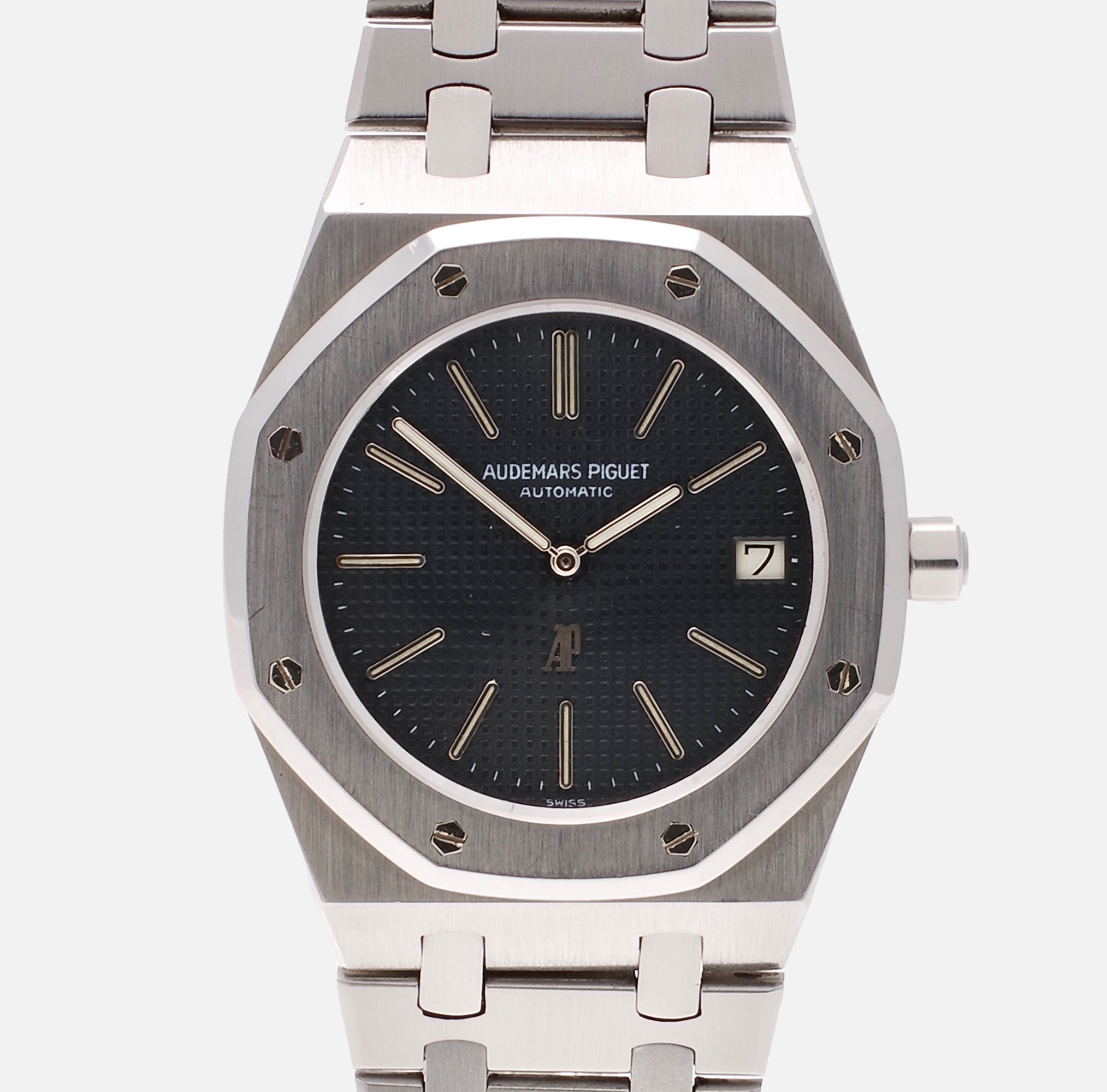


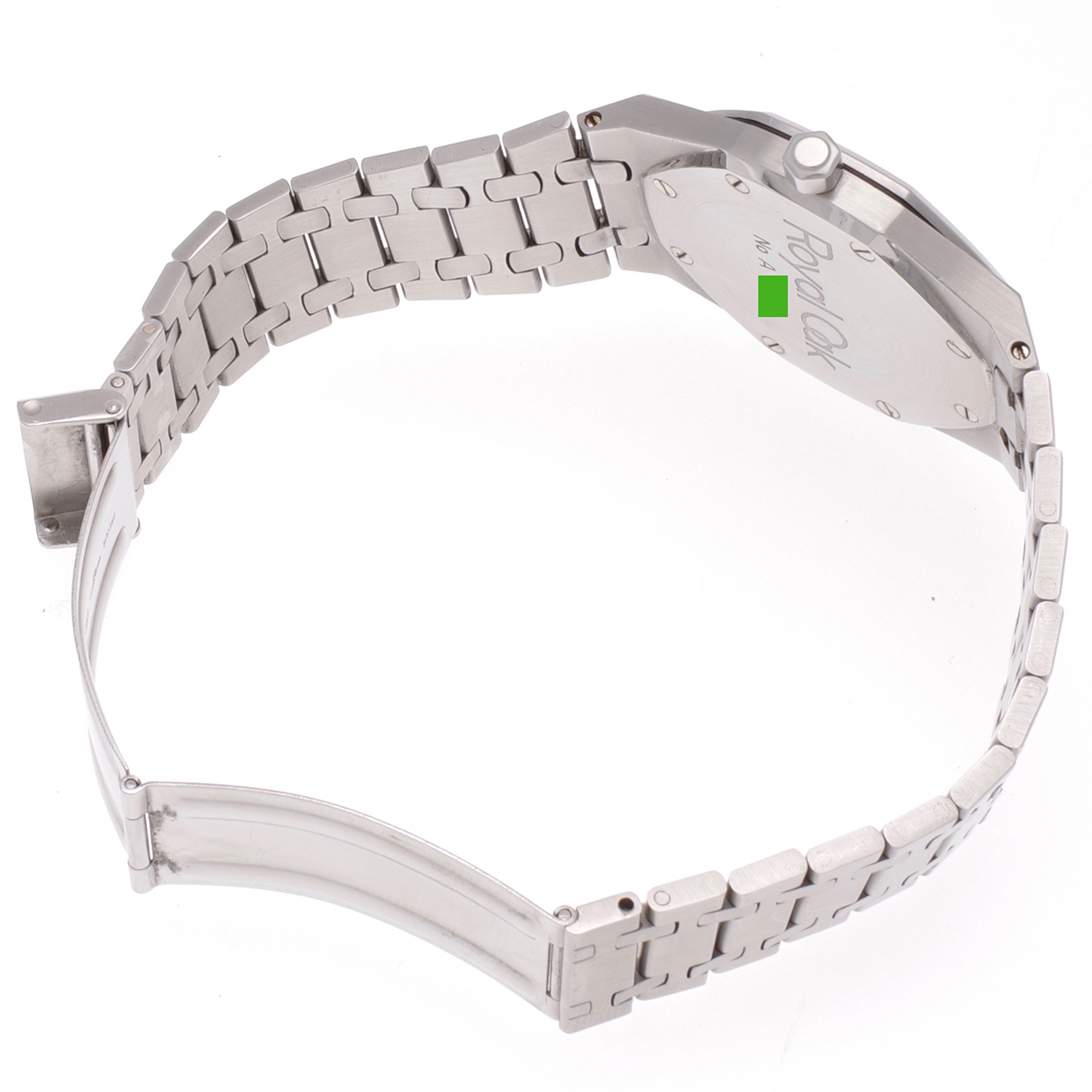
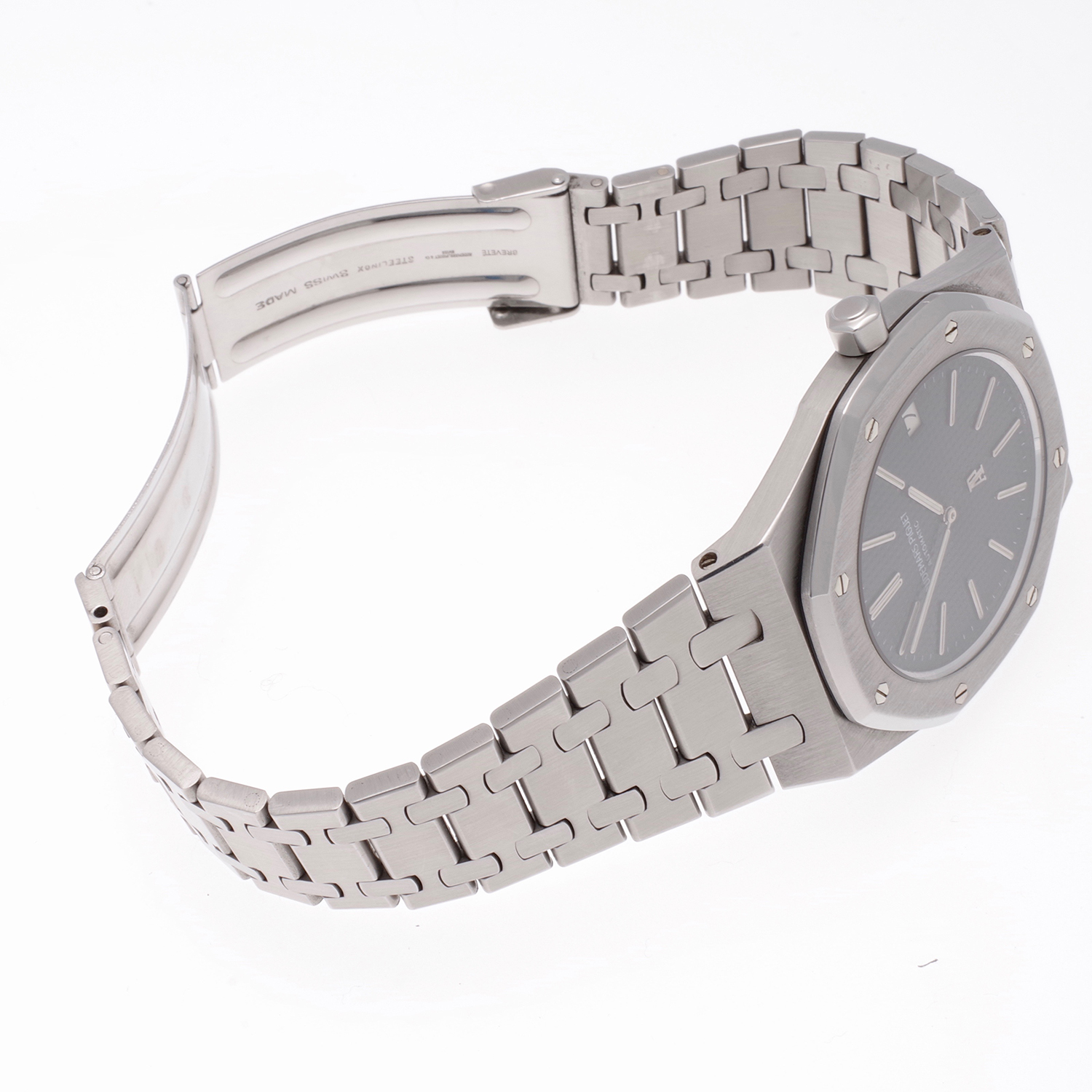
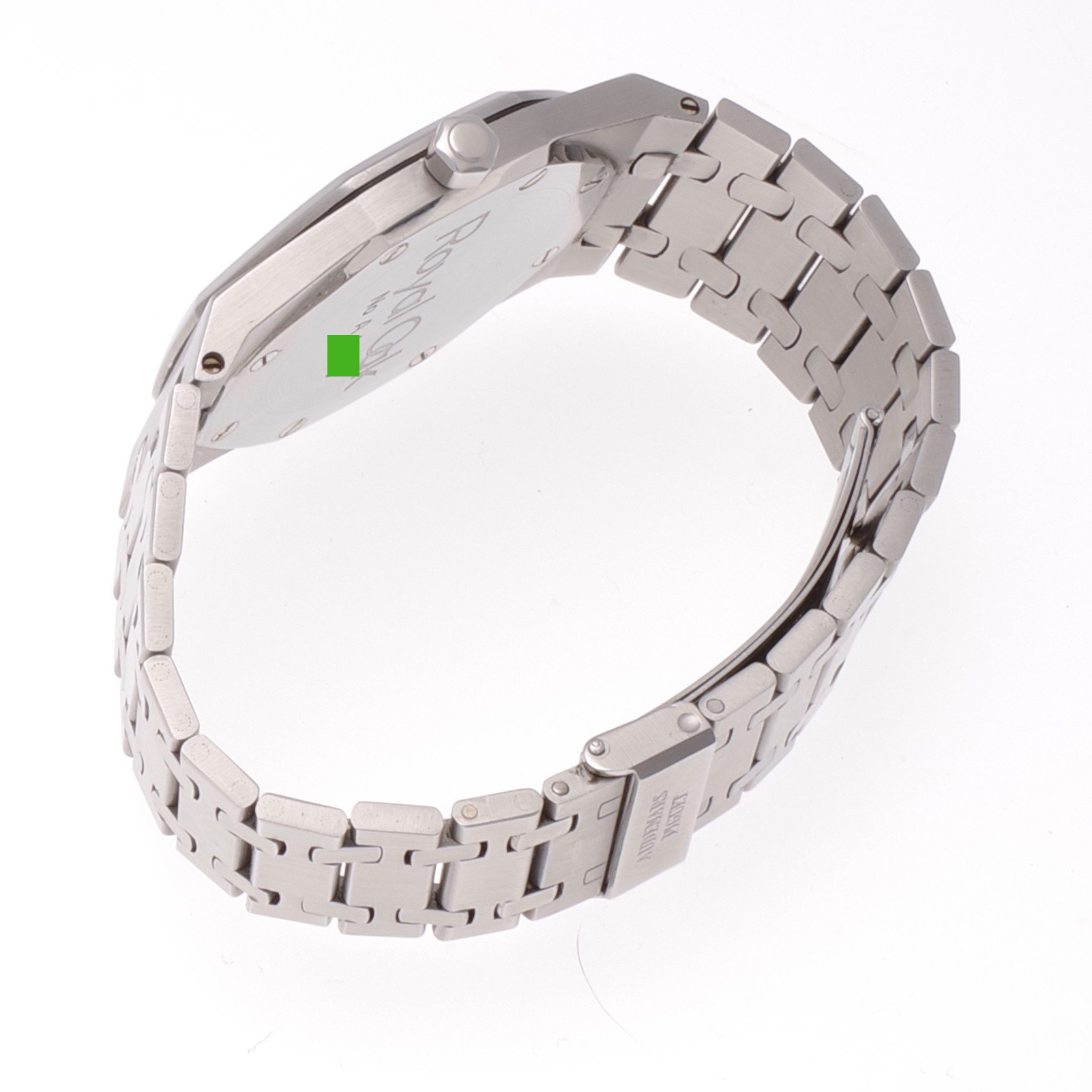
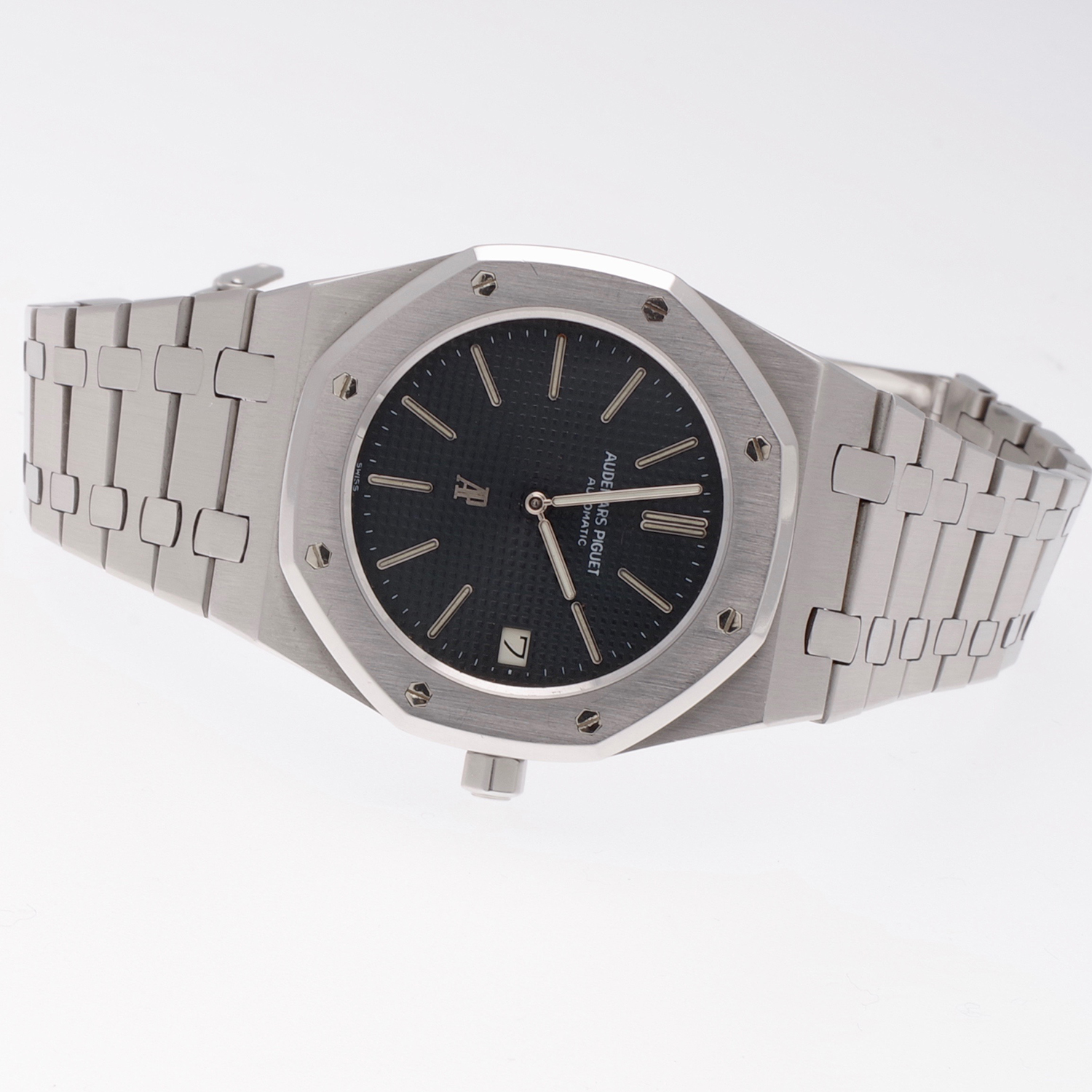
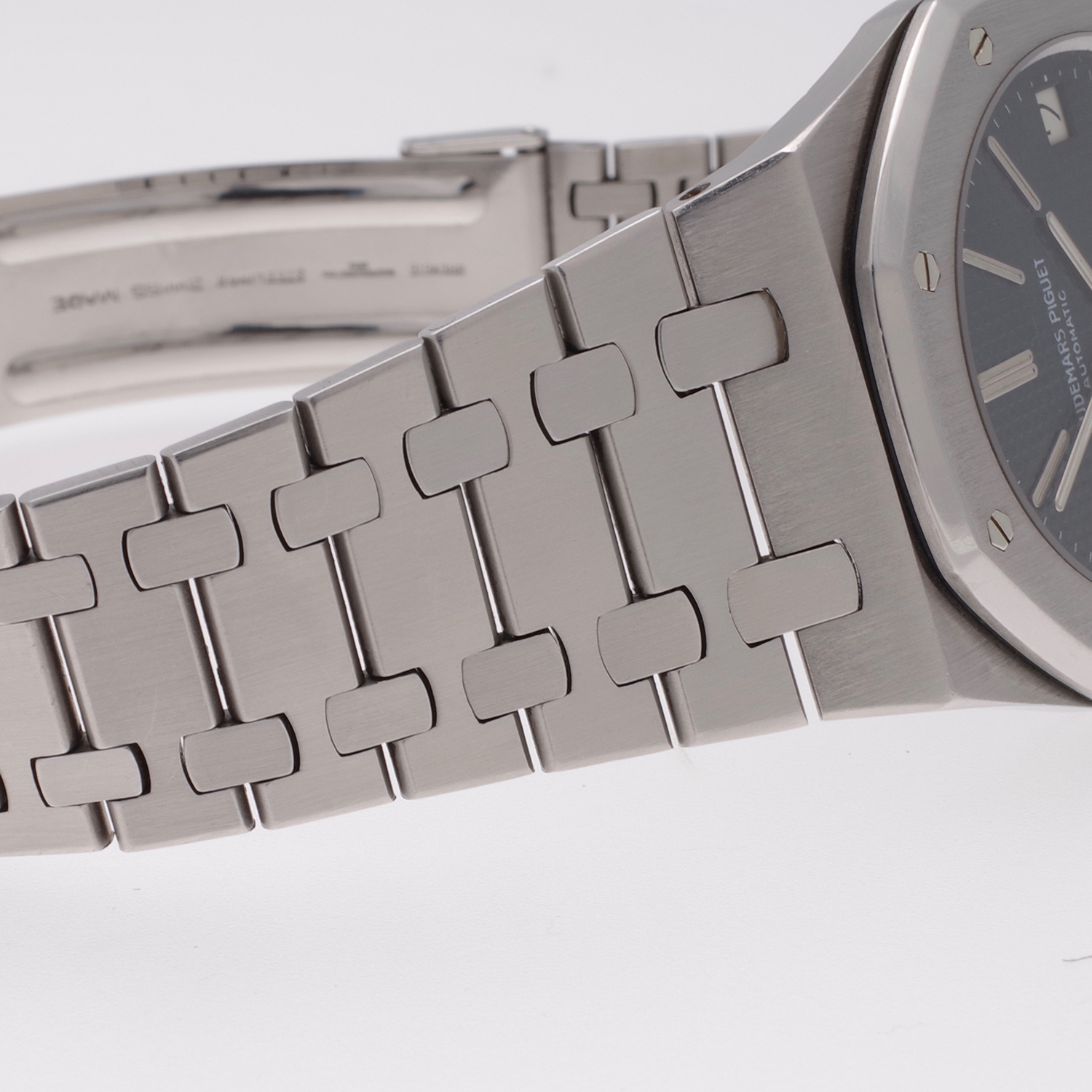

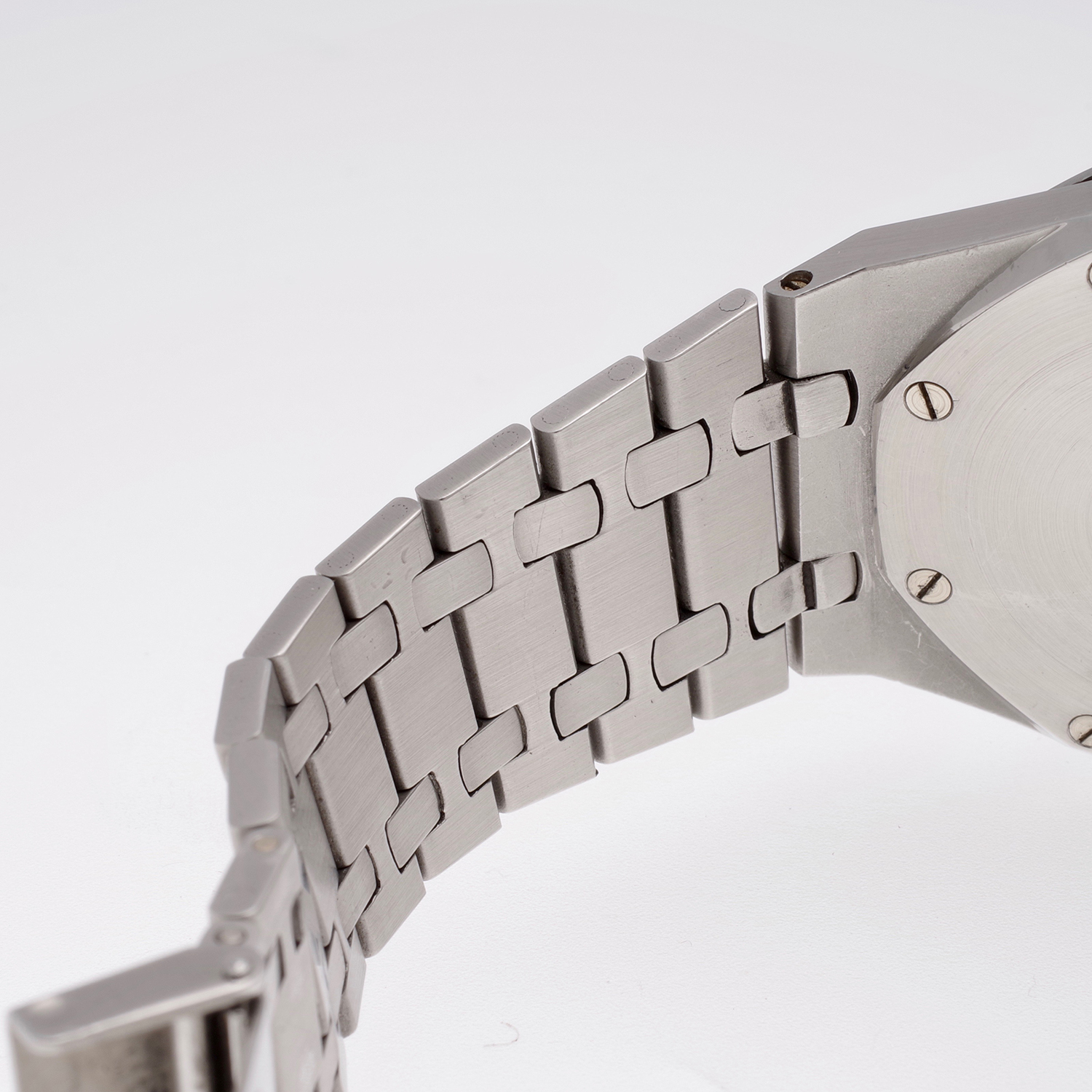
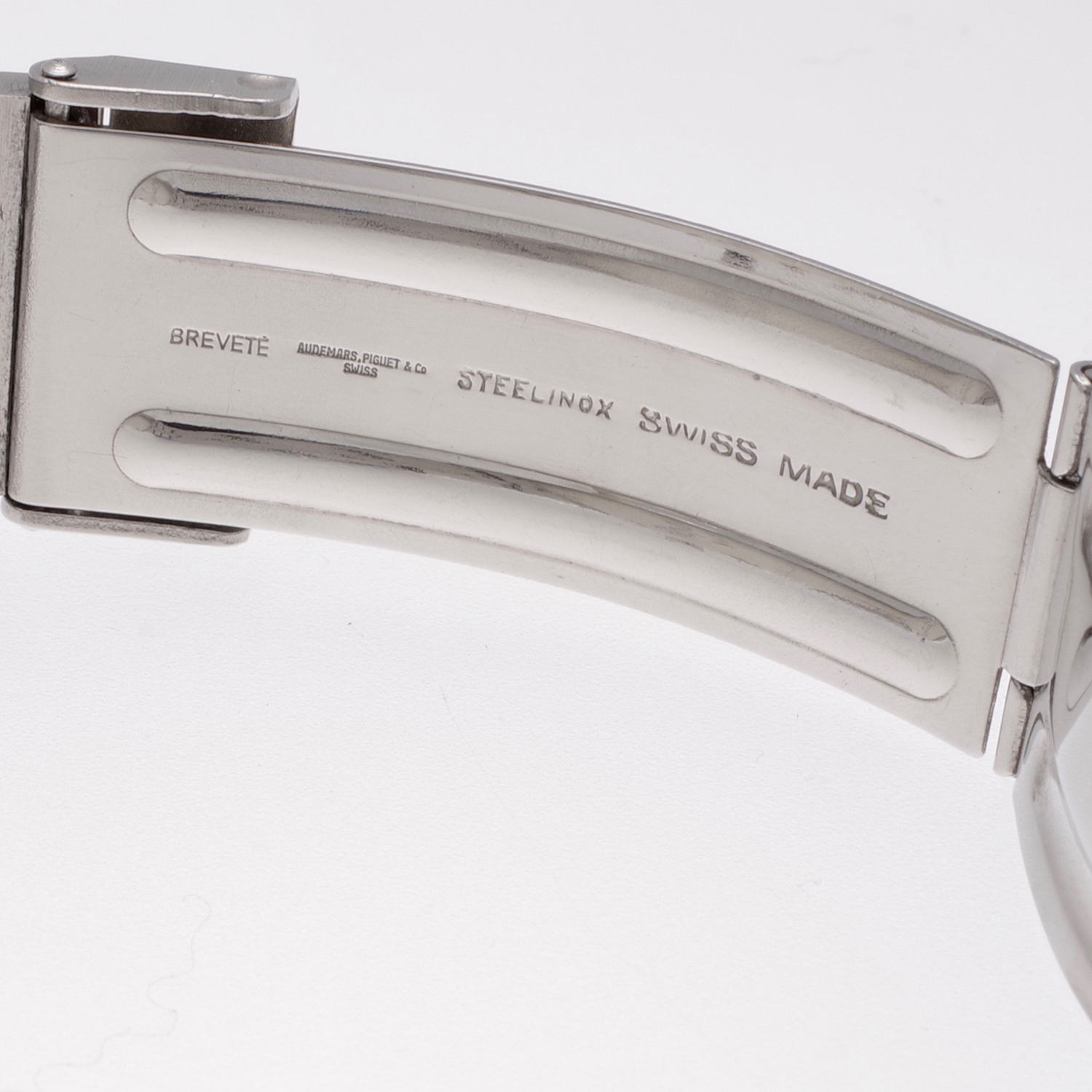














The concept for the new Royal Oak watch was truly projected in the future. ln 1972 the
swiss industry was going at full speed, growing to over 5 million units produced and the
watchmaking sector enjoyed an aura of accomplishment and euphoria. In three years this will stop because of financial deceleration and the increased competition from the Far East.
ln this climate at Le Brassus the "Royal Oak" project was given the go ahead.
The name finds its roots in British History. King Charles Il of England, during the English
Civil Wars, took repair in the historic Oak tree in Boscobel Woods and escaped capture by the Cromwell Army. This event is remembered in the Royal Oak day on the 29th May
each year. This name, resounding of longevity and strength, was subsequently used in a
series of eight ships of the English Navy, from 1664 to 1908. The last one was sunk in the WW2 at Scapa Flow.
The noble and royal ancestry, the domain of the sea in ail continents, the strength and resilience of the oak tree, and the precision technology of powerful gunships, all of it was contained in that name, that watch and that concept.
This was the starting point of one of the most innovative watch design ever conceived. The watch was designed by the swiss Charles Gerald Genta, characterised by an
octagonal bezel fixed by eight bolts with hexagonal head, running through the thickness
of the case and being secured in the back by a round nut. The head of each bolt was
simply decorated with a slot, giving the perception that the heads could be used to secure the bezel to the case. But in fact in a second moment becomes obvious that the
hexagonal head could not possibly rotate, and that is in fact a nuts and bolt system.
The slots of the bolts are oriented to form a circular shape, which plays a visual game with the hexagonal shape of the bolt heads, and the octagonal shape of the bezel.
Presented at the Basle Fair of 1972, it was met with surprise and amazement by the watchmaking industry.
Il was probably too advanced a design for the time, and it raised awe and bafflement in the competition. With an octagonal bezel resembling the shape of the ship’s porthole, the watch had, for the first lime, an integrated bracelet -not simply soldered to the case but part of it, like if the case was following the wrist itself.
lt was also the first attempt, excluding perhaps the Rolex products, to produce a prestigious and stylish sports watch. This seems to be the original intention - but what was most baffling was the futuristic design, the materials and the price.
A large watch at 40mm diameter and 7 mm thickness, the watch was made in steel, but at 3.650 CHF costed more than many gold watches. ln ltaly the Rolex Submariner was
less than a third this price, and the IWC lngenieur less than a quarter.
It must be said that concurring to the price were not only the prestige of the brand, but also the structural complexity of the case (with the go-through hexagonal bolts and nuts, and the case shaped to accommodate these) and the bracelet, with individually manufactured links to achieve an increasing tapered shape. High price and innovative design did not stop the Royal Oak from becoming an immediate success, whose “family” in the years included new models, complicated watches and ladies' watches - until today's range which goes from lime only to perpetual models.
ln this watch we find a Jaeger LeCoultre Caliber, a beautiful story as it is the only caliber used by the "Holy Trinity "of watch manufacturers Audemars Plguet, Vacheron Constantin and Patek Philippe) and by no one else. But it was an ebauche designed and produced (but not refined) by Jaeger LeCoultre as ref. 920, a caliber that JLC never used in one of their own watches.
(Thanks to mstanga - 2014 for these informations)